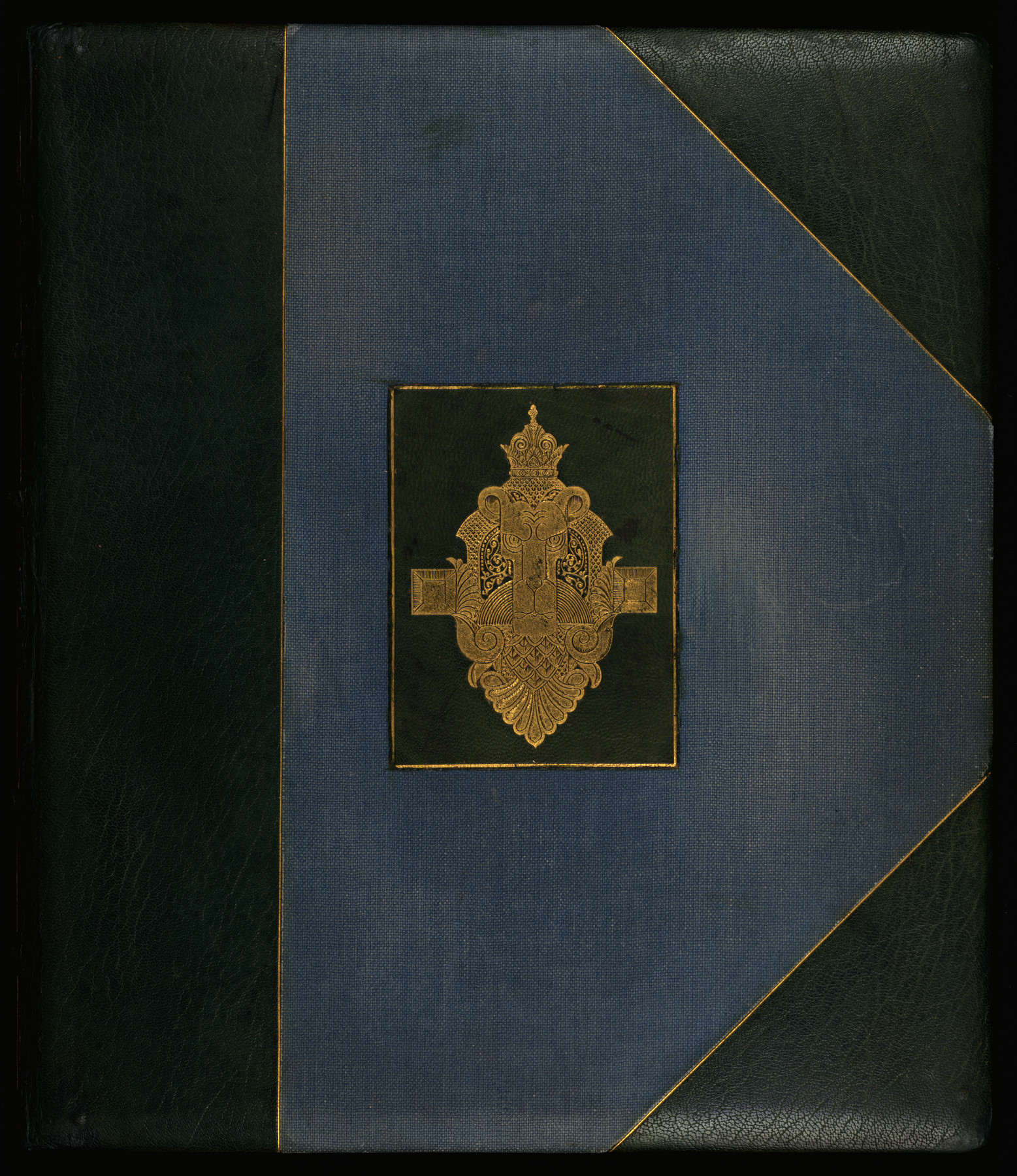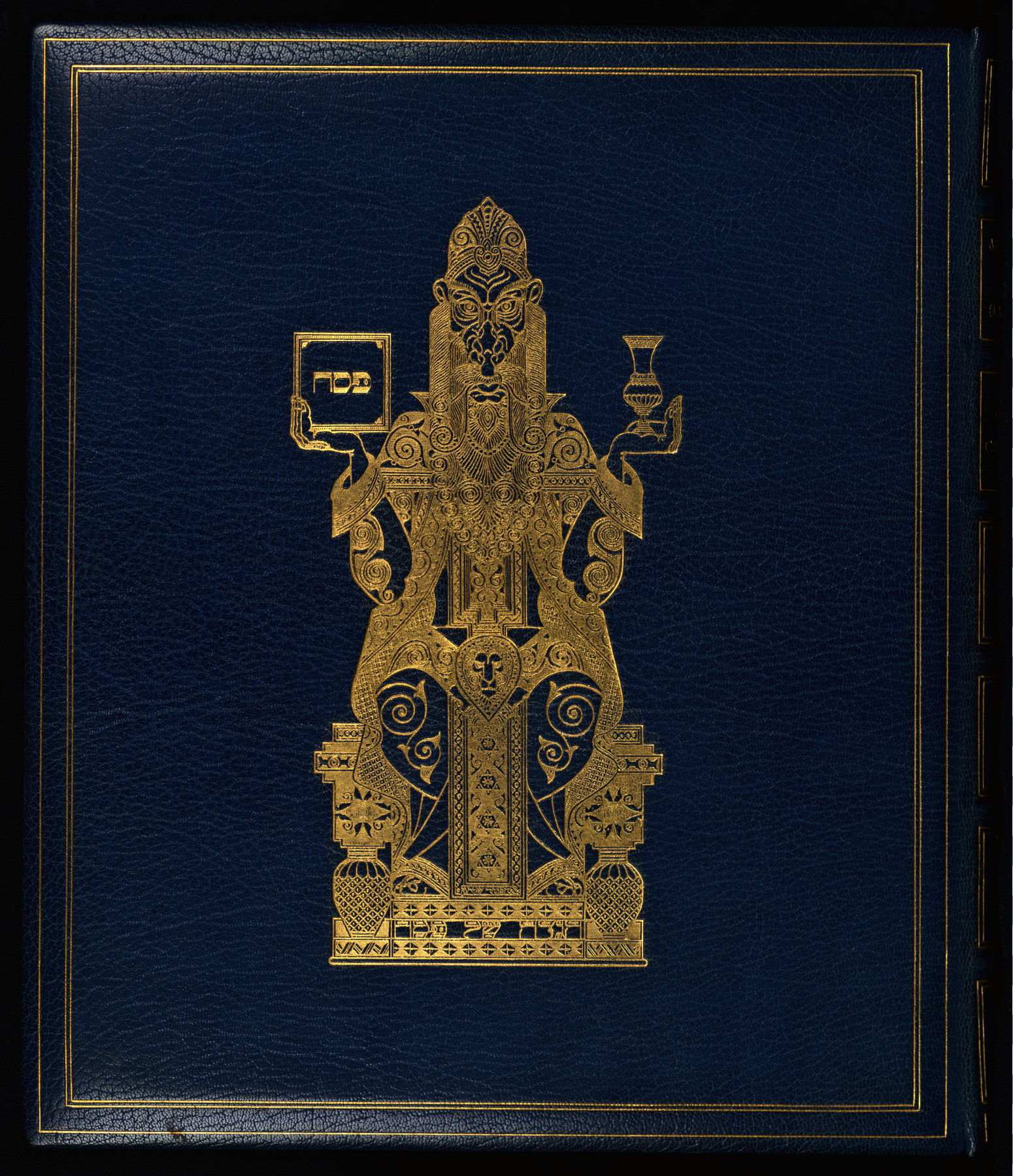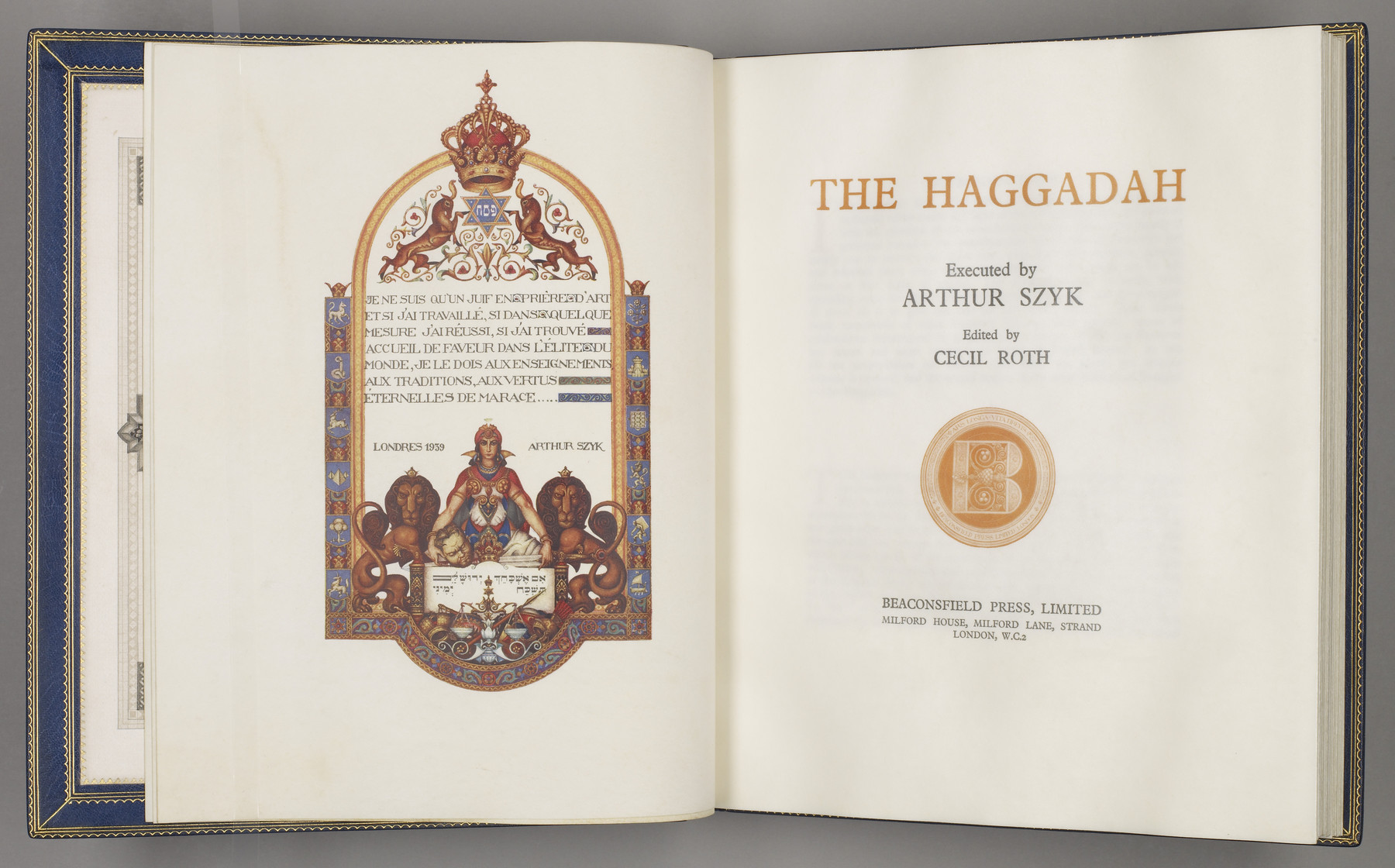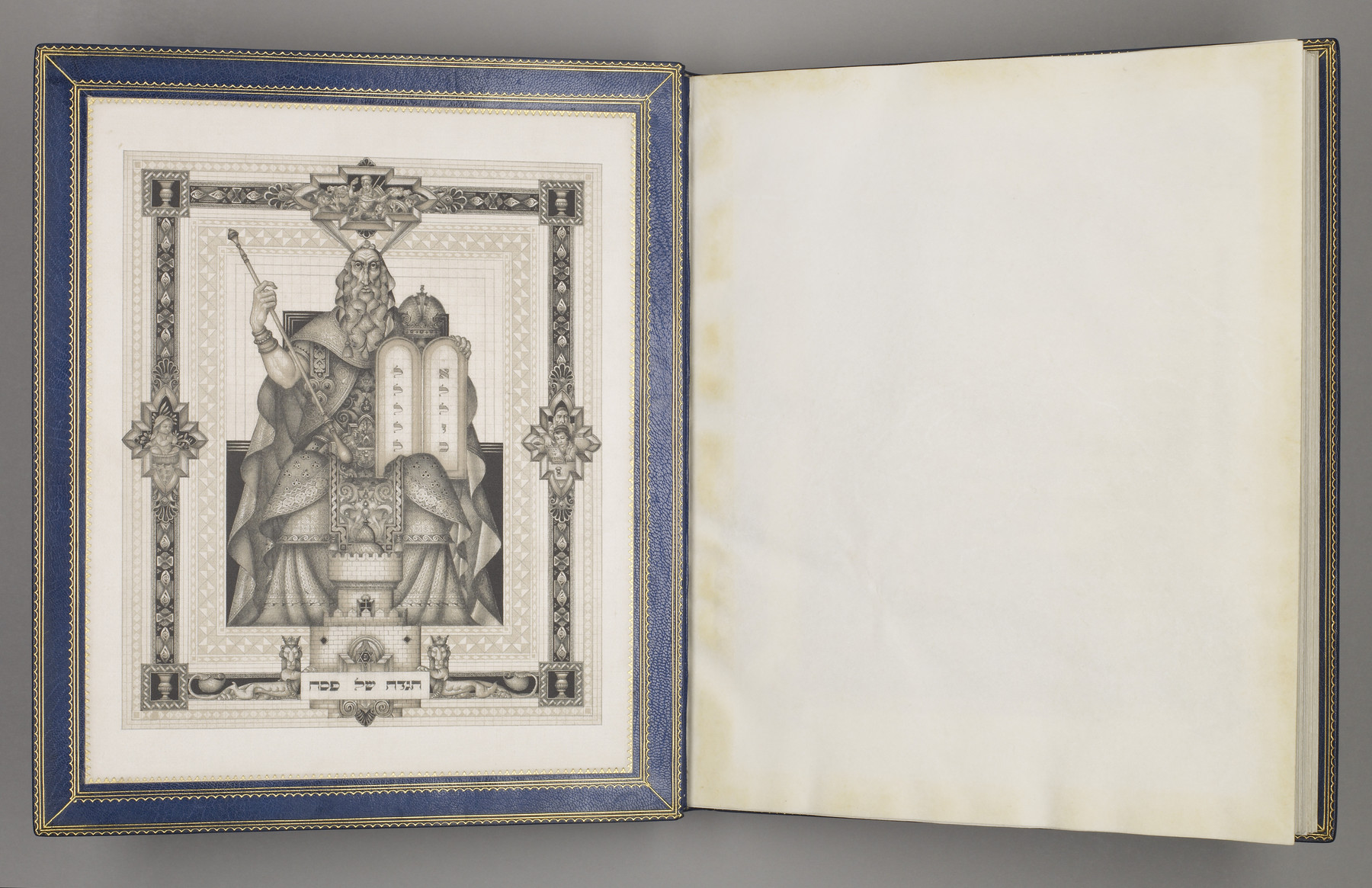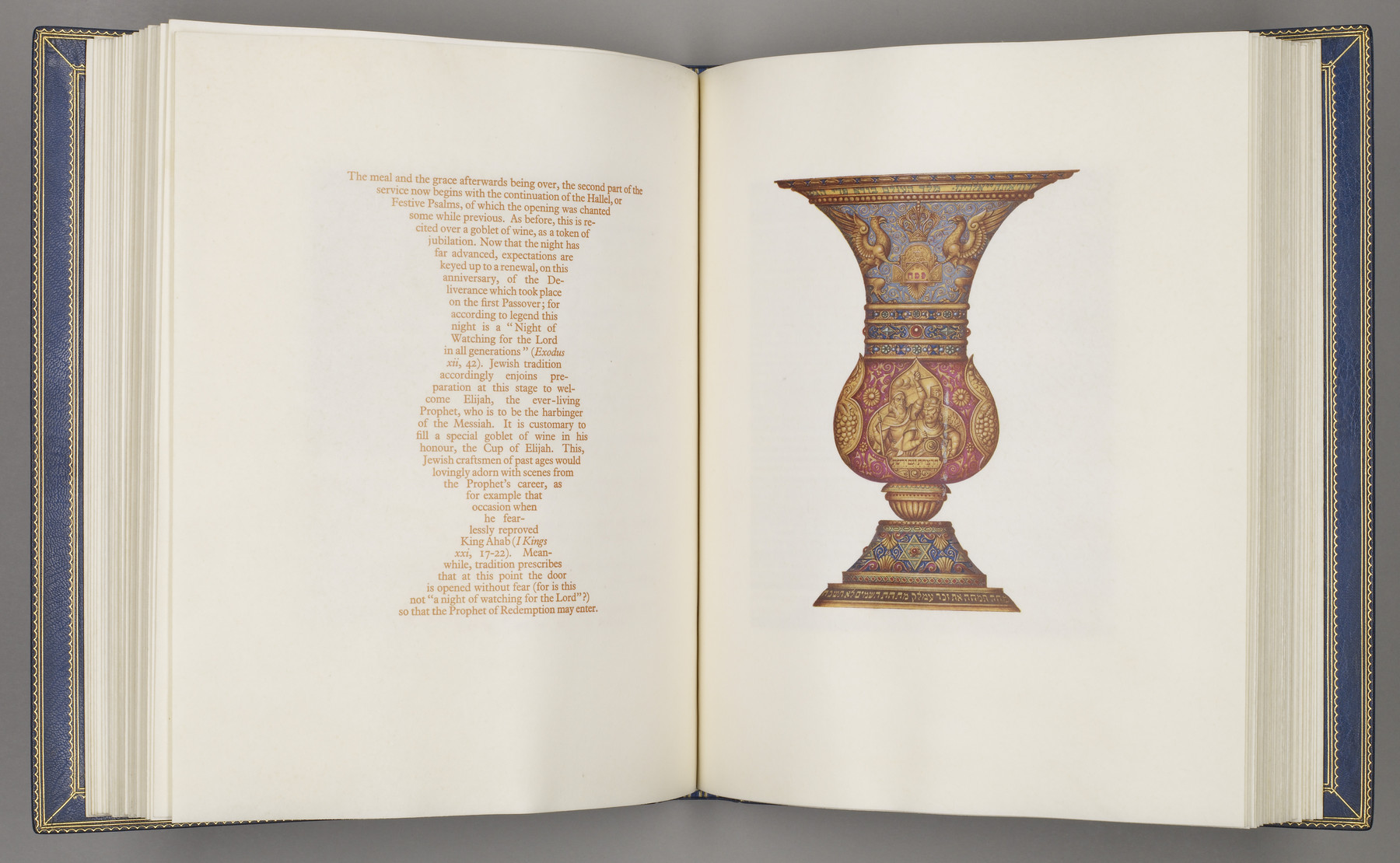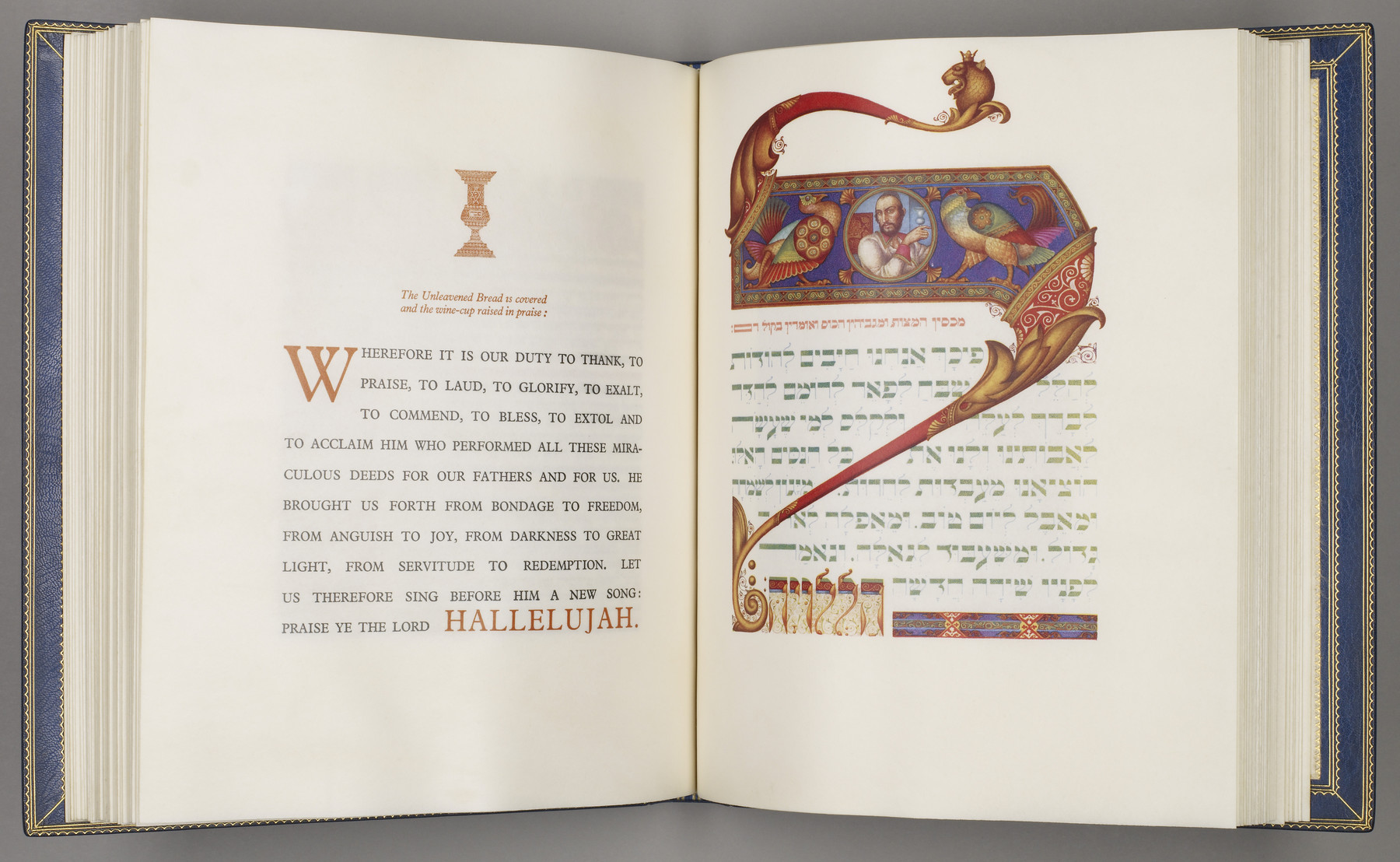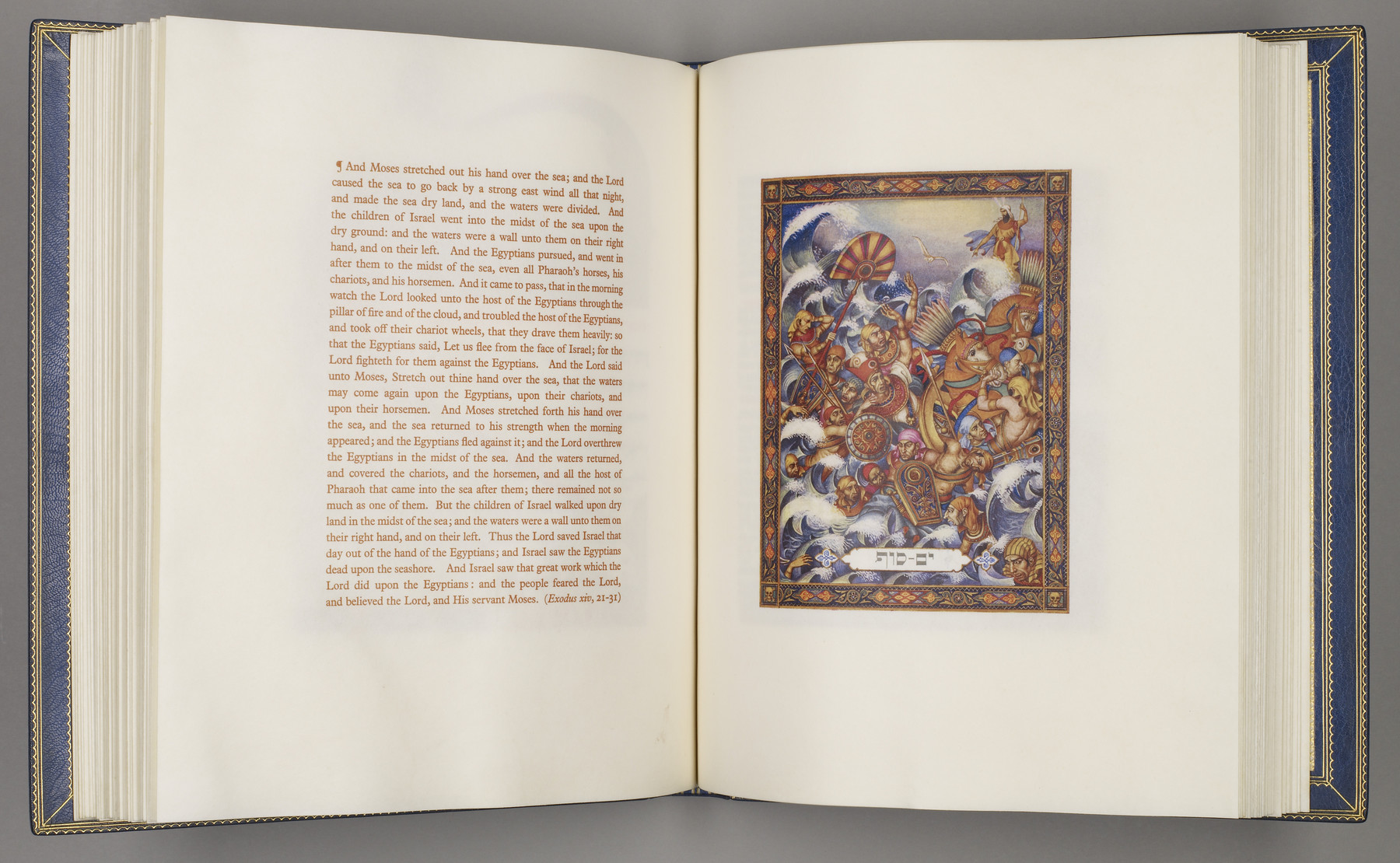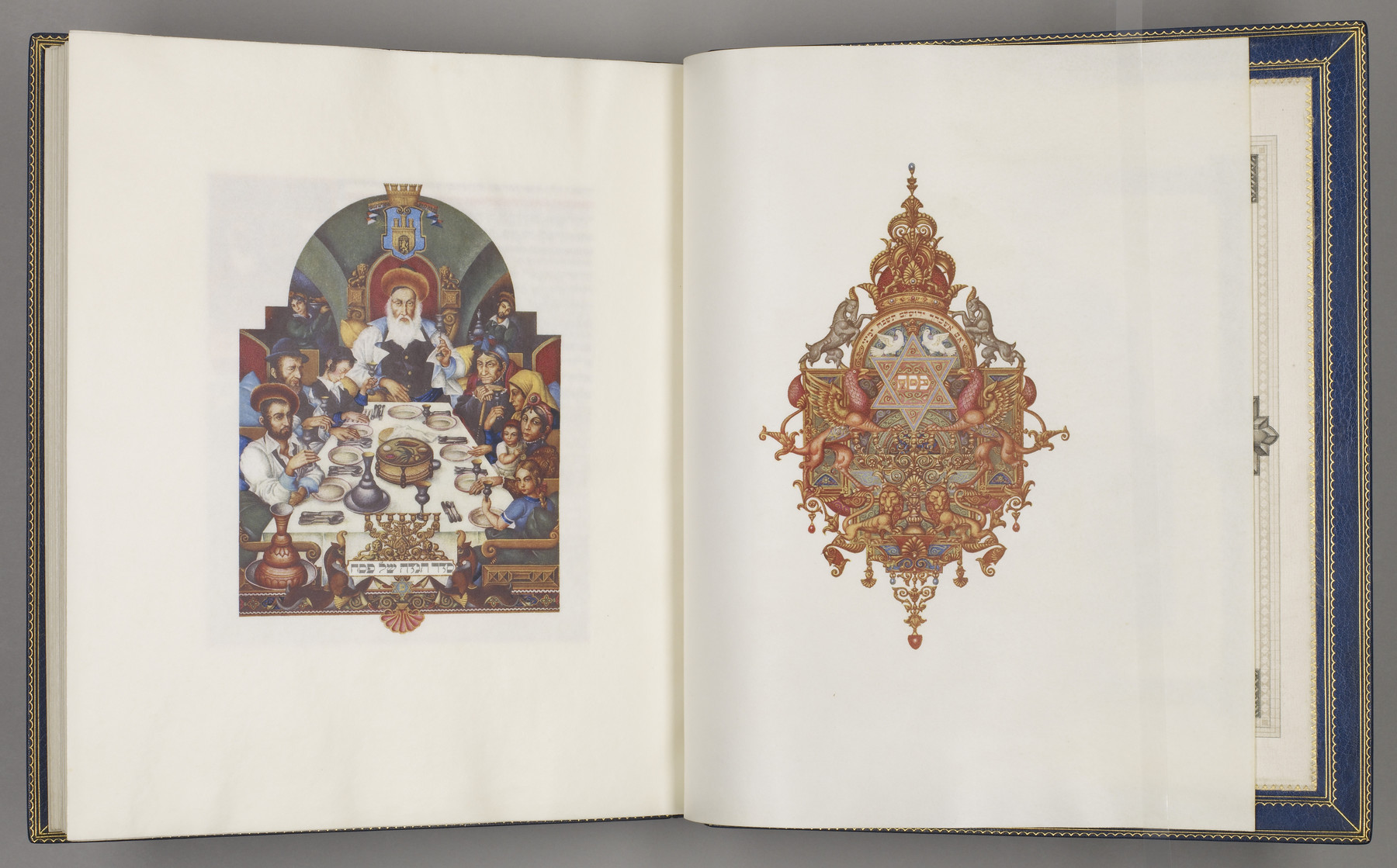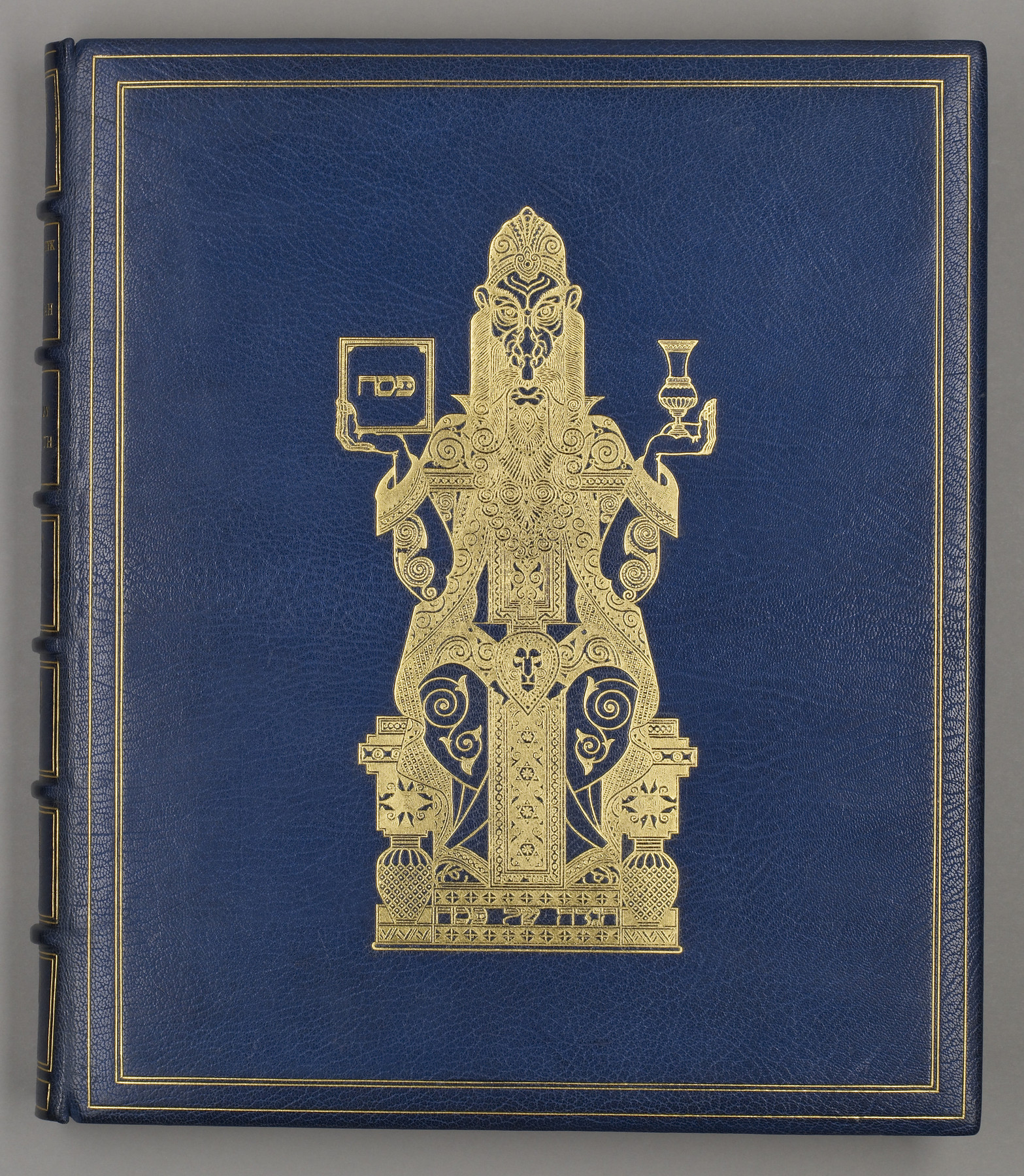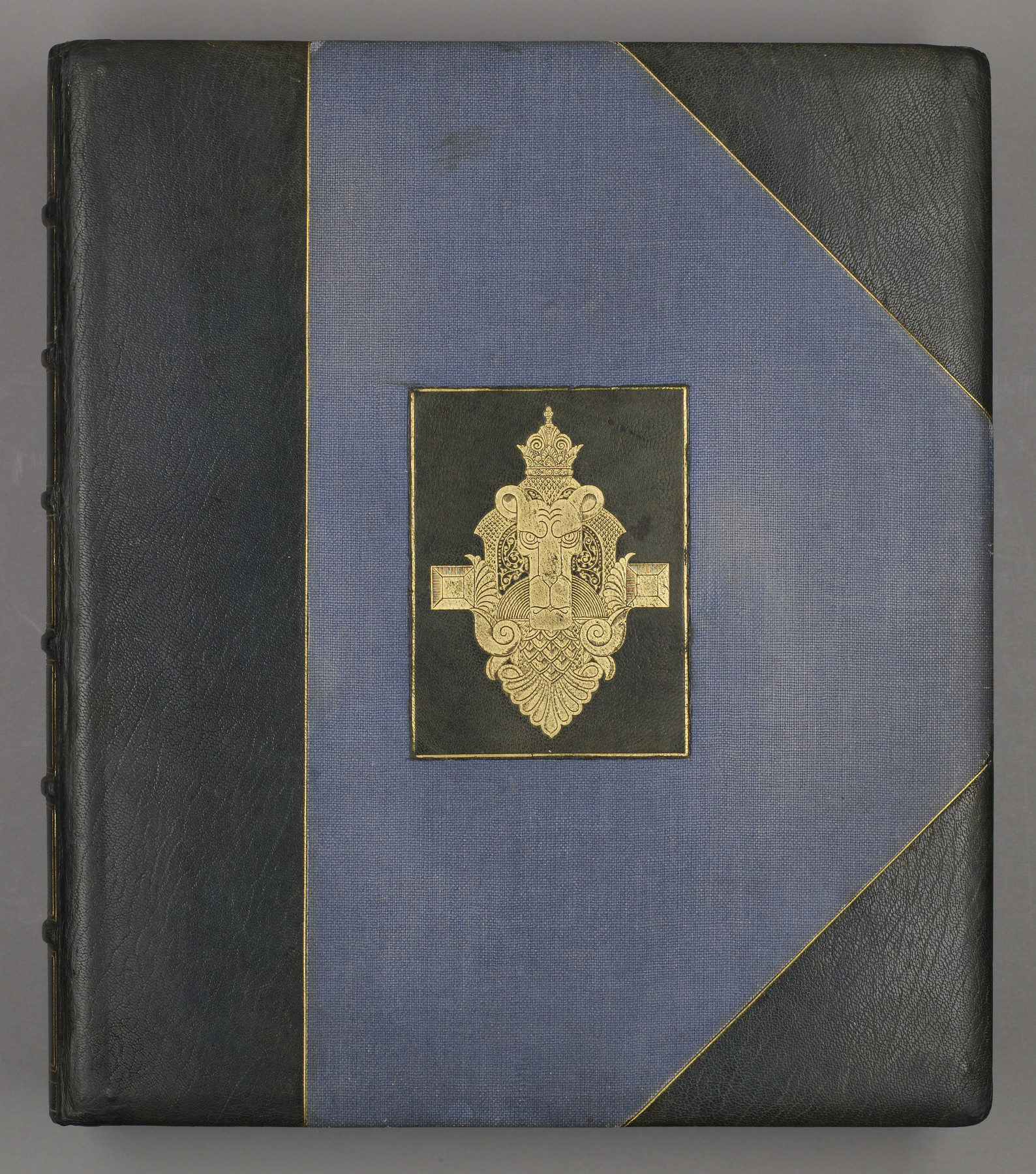The Szyk Haggadah
(Manuscripts and Rare Books)
This is a first edition copy of the most important Haggadah of the 20th century. Printed in jewel-like color on very fine vellum, it is written in Hebrew and English, and is one of only 250 numbered and signed copies. When first published in 1940, each copy sold for $500 (the equivalent of $8,800 today), making it one of the most valuable books produced in the 20th century. The Szyk Haggadah was described by the London Times as "a book worthy to be placed among the most beautiful of books that the hand of man has produced." Arthur Szyk (1894-1951), is considered today to be one of the greatest modern artists to work in the style of medieval illuminated manuscripts.
Szyk received formal training in Paris between 1921 and 1931, and it was there that he learned the art of manuscript illumination. He was scribe as well as artist, and was known to work with a one-hair brush to create finely detailed paintings in watercolor and gouache. His philosophy can be summed up in his own words: “Art is not my aim, it is my means.” Szyk made it his mission to use his art to speak out against tyranny. The moment Hitler came to power, Szyk recognized the danger to the Jewish people, and created poignant political imagery to fight against the Nazi regime.
Szyk undertook his greatest project, the Haggadah, between 1934 and 1936 while living in Poland. It was his masterpiece, and something he was urgent to share. The Haggadah is an ancient traditional text recited at the Seder on the first two nights of the Jewish Passover, and it includes the narrative of the Exodus from Egypt. Used ceremonially by all Jewish communities during this most holy of times, the Haggadah provided an ideal text for Szyk to illuminate, for it could serve both as a magnificent celebration of faith that could be passed down for generations, while it simultaneously assured his people that they could overcome the looming threat as they had others for millennia. His art drew attention to the dangers of the contemporary Nazi regime by juxtaposing it with the oppression of the Jewish people by the ancient Pharaohs. Often this was overt in his original paintings, incorporating swastikas into Egyptian ornament, and into the repeated image of a vicious snake, as well as depicting several of the Biblical villains as Hitler. This visual language was problematic, as publishers would not take on the project due to fears that his art was too controversial - it was seen as dangerously outspoken at a time when the Nazi party was gaining support, and people were distancing themselves from the Jewish population out of fear. Szyk lamented that he was “completely financially ruined” in 1938, but his friends in the Ukraine and London fundraised until they had enough money to establish the Beaconsfield Press in London. Created solely for the purpose of publishing Szyk’s Haggadah, the press spared no expense, printing the book entirely on fine vellum and providing a rich binding by Sangorski & Sutcliffe. Szyk’s concession was that in order to publish, he had to modify some of the more overt imagery, turning swastikas into circles, and reworking the figure of the pharaoh (although another figure, the “Bad son,” sports a Hitler mustache, and is easily recognizable). While he made those modifications in order to see the publication through, the intensity, bite, and beauty of his vision remains undimmed.
Exhibitions
| 2023 | New on the Bookshelf: Expanded Narratives, part I. The Walters Art Museum, Baltimore. |
Geographies
United Kingdom, London (Place of Origin)
Measurements
Folio H: 11 5/16 × W: 9 13/16 in. (28.8 × 25 cm)
Credit Line
Museum purchase with funds provided by the W. Alton Jones Foundation Acquisition Fund, 2018
Location in Museum
Not on view
Accession Number
In libraries, galleries, museums, and archives, an accession number is a unique identifier assigned to each object in the collection.
In libraries, galleries, museums, and archives, an accession number is a unique identifier assigned to each object in the collection.
92.1349

